Додатковий матеріал до інтегрованих уроків з англійської мови для 4 класу на тему "The origin of the months’ names"
1
The origin of the months’ names
(додатковий матеріал до інтегрованих уроків з англійської мови та природознавства)
Мета:
-зацікавленість у розширені своїх знань про місяці
-дізнатись про походження англійських місяців
- ознайомитися з походженням українських місяців
T: Do you know the months of the year? How many
months are there in the year? Do you know that the names of the months all come from Latin. Many of the names were named of Roman gods.
What winter months do you know?
JANUARY
The first month of the year January was named after the god Janus. Janus was a strange god who could look in two directions: forward and back at the same time. He was the god of endings and beginnings.
So, January looks forward to the new year and it also looks to back to the old year.
FEBRUARY
February is the second month of the year. Februa was the name of a purification feast held on the 15th of this month. It is known for its great variety of weather – snow, frost, rain, high winds, showers and sometimes fine, mild days, which tell us “ Spring is coming”.
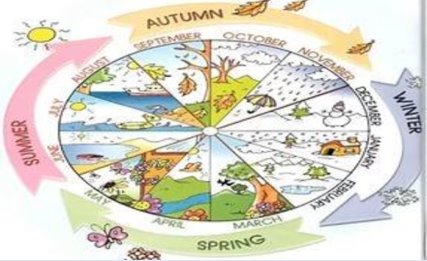
What spring months do you know?
MARCH
Which god gets a planet and a month named after him? You have guessed it: Mars. Why him? In ancient Rome several festivals of Mars took place in March , since Mars was a god of war.
APRIL
April is the fourth month of the year. The origin of the word April is not known exactly. Probably the word comes from the Latin word “ aperiri “ which means – “to open”. In April the sky is open. It rains very often. The fields and the meadows are dressing in green. The birds sing their songs. The days become warmer and longer. Everything is full of life and joy. In Old English was also sometimes called “ Easter month. “
MAY
May is the fifth month of the year. Sometimes the cold east wind and night frosts can be, but as a rule the weather in May is fine. The trees become green and many flowers burst into blossom. Nature looks full of promise .
That is why people often say – “ As welcome as flowers in May”. The month is connected with the goddness Maia. Maia was a daughter of Atlas and mother of Hermes.
What summer months do you know?
JUNE
June is the sixth month of the year. It was named after the beautiful goddess Juno. She was the wife of Jupiter and goddness of marriage and childbirth.
In June summer sets in. June is one of the finest, healthiest and the most pleasant month of the year. The days are the longest. The trees are in leaf, roses and lilac begin to blossom and their sweet perfume fills the air. That is why June is called “Leafy June” or
“ The Month of Roses”.
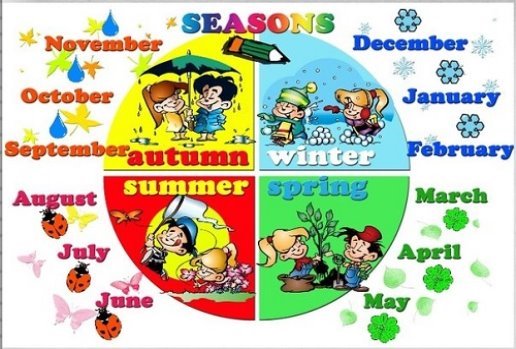
JULY
July is the seventh month of the year. It was named after Julius Caesar a famous Roman dictator. In July there is often a break in weather. Sometimes it is very humid. Suddenly dark clouds drift in the sky. It lightens and thunders, and it begins raining. A heavy downpour or a hailstorm makes the air cool down very quickly. Then it clears up. The rainbow appears in the sky. The air is filled with freshness and delicious aromas.
In July many fruits ripen in the orchards.
AUGUST
August is the eighth month of the year. It was named after the first Roman emperor Octavian AUGUSTUS. Augustus himself was given this title when he became emperor, having previously been known as Octavian.
What autumn months do you know?
SEPTEMBER
September is the first month of autumn. In September, school begins and teaching starts at educational institutions. Birds begin to fly away to warmer areas.
OCTOBER
During October leaves begin to fall from the trees and most birds fly South. Shorter days are more obvious and it gets colder outside.
NOVEMBER
November comes from “novem”- nine. November is also we are afraid, used with allusion to November’s position at the end of the year and to the characteristic greyness, gloominess associated with it in the northern hemisphere.
DECEMBER
December is the twelfth month of the year. In December, snow begins to appear. This means that Christmas holidays are near, and you can go skating , skiing throw snowballs and go sledding from the hills.
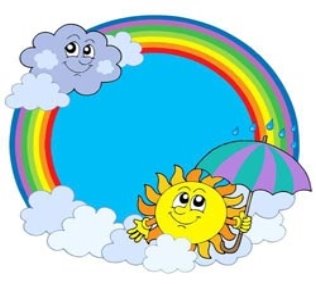
Poem “ The twelve months”
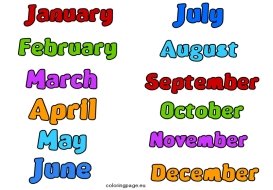
January with cold is set,
February is chill and wet.
March wind often rages,
In April weather changes.
Pretty flowers come in May
Sunny June brings longest day.
In hot July the skies are clear,
Then August with corn is here.
For fruit September opens the way,
October sweeps the leaves away.
Next enters gray November,
And , lastly , snowy December.
_ Christina Rosetti
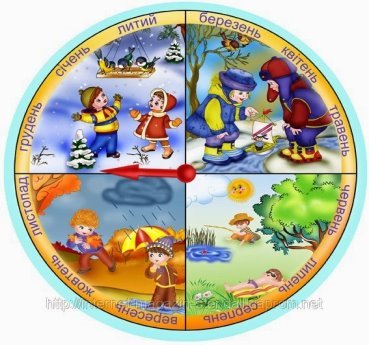
Вчитель природознавства:
А зараз дізнаємося про походження місяців в Україні.
Зимові місяці.
Грудень - перший зимовий місяць називався, (час не проїзних доріг, «грудь» – земля перетворюється в замерзлі грудки, інша назва була студень (пов’язано з настанням холодів). У цьому місяці сонце повертає на літо.
Січень - наступний місяць , який мав назву просинець (просинь з’являлась на небі після суцільної осінньо – зимової хмарності), тріскун (від морозів все тріщить) чи січень («сочень» вказував на перехідний період зими, що відбувається саме в січні, поділ зими на дві частини, одна з яких – настання лютих морозів) На Русі цей місяць був спочатку одинадцятим, а першим був березень.
Лютий – сніжень чи лютий (період, коли панують люті морози),які сковують землю і води. Його супроводжують пронизливі сніговії, колючі морози, вітри і перемети.В цьому місяці проходить межа між весною та зимою. (Срітення).
Весняні місяці.
Березень – березол, березозорь (в найсухішу пору березовий ліс підсихав, його спалювали для отримання золи, яку далі використовували як добриво).На березень припадає весняне рівнодення -22 березня.
Квітень – цвітень (саме тоді починають цвісти перші дерева, розквітає весна), лукавець (через примхливу погоду) або снігогон (течуть струмки, забираючи з собою залишки снігу).
Травень – травний, травень (час буйного цвітіння трав).Останній місяць весни спочатку мав давньослов’янську назву « май».Походить від імені прадавньої богині природи і землі Майї.
Літні місяці.
Червень – найперша давньоукраїнська назва місяця була ізок (коник-цвіркун), оскільки їх багато в цей період; також цьому місяцю була притаманна звична для нас назва червень (червоний місяць, період достигання та червоніння ягід, плодів) чи «червець» (черви), оскільки в цей період в садках люди збирали шкідливих гусениць).
Липень – липець (час цвітіння липи, з якої виготовляли ліки від хвороб та збирали мед) чи грозник (від сильних гроз). ««Сінокіс» - в цей час заготовляли сіно.
Серпень – серпень, жнивень (пора жнив серпами).А ще іменували цей місяць «спасівцем», бо на його період припадає Спасівка- Піст – із 14- 28 серпня.
Осінні місяці.
Вересень – хмурень (небо часто «хмуриться», ідуть дощі), вересень (на честь квітів вересу) або ревун (саме у вересні починались осінні холодні вітри). Інша назва «бабине літо» (цю пору ще було тепло і баби доробляли свою роботу).
Жовтень – жовтень (місяць пожовклого листя) або паздерник (звичайно в цей період кострицею переробляли м’яту, льон). Також в народі його називали весільник (період святкування весілля після збору врожаю).
Листопад – падолист, листопад (в цей період опадає листя з дерев). Останній місяць осені, який дуже часто підпадає під владу зими, також іменували « напівзимником».
Підсумки:
Таким чином, назви місяців в українській мові можна легко трактувати і пов’язати з тими чи іншими природними чи господарськими явищами, завдяки яким вони виникли. Проте варіації назв деяких з них потребують пояснення та подальшого вивчення.
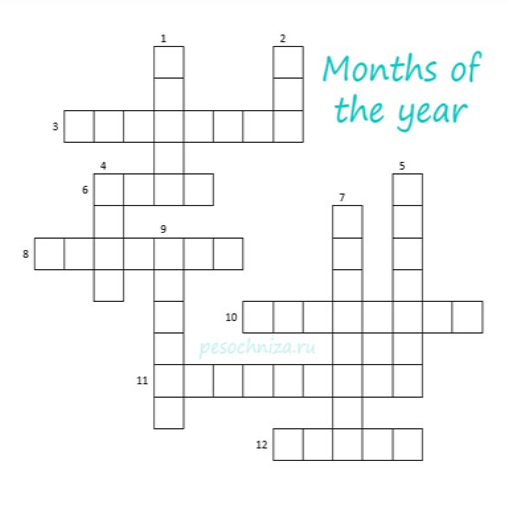
1 … brings the primrose sweet,
We see daisies at our feet.
2 … brings flowers, joy and grass
And the holidays for us.
3 … snows again
And sometimes it brings us rain.
4 … brings lilies and roses.
Fills the children`s hands with posies.
5 Fresh … brings much fruit
Then to gather them is good.
6 Hot … brings apples and cherries
And a lot of other berries.
7 Cold … brings us skating,
For the New Year we are waiting.
8 … bring the snow,
Makes out feet and fingers glow.
9 … brings us golden corn,
Then the harvest home is borne.
10 Red … brings us joy,
Fun for every girl and boy.
11 Warm … brings us school,
Days are shorter, nights are cool.
12 … brings sunny days and winds
So we know that spring begins.
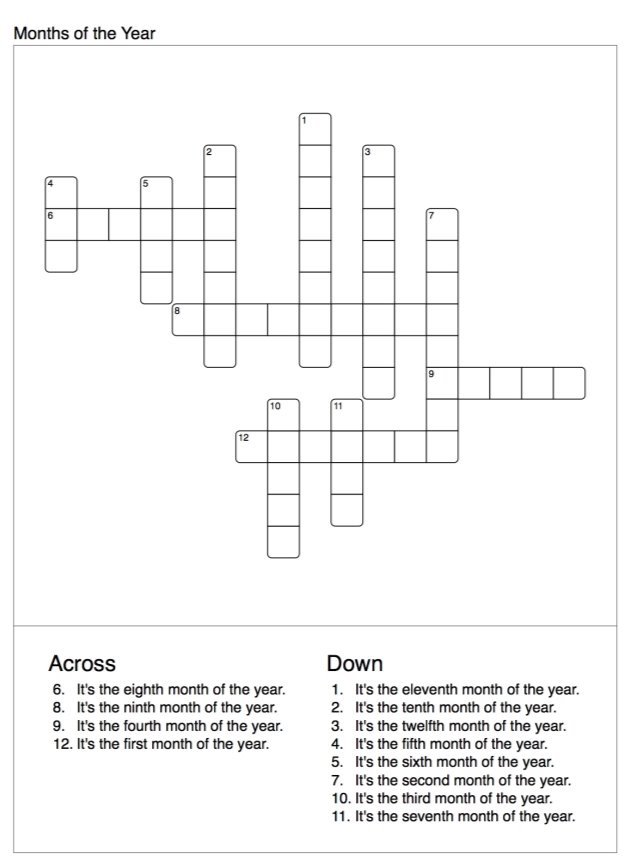
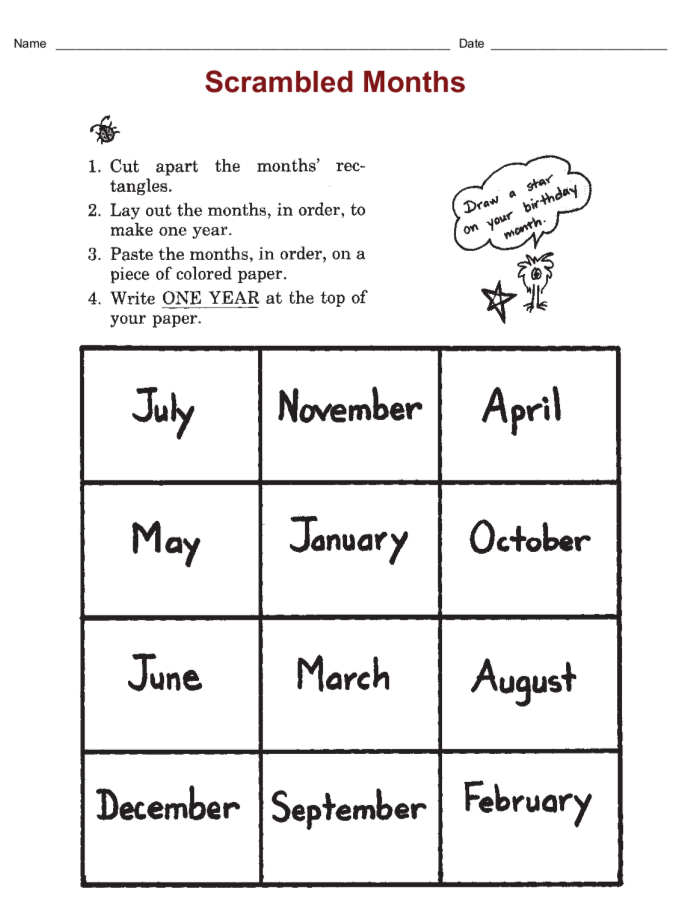
Використана література:
- Інтернет ресурс; eslorangetree.com
- Інтернет ресурс: Englishon –line.ru
- Журнал “Словознайка” English # 1-12, 1995
- Журнал “Poznayko”, winter 2001


про публікацію авторської розробки
Додати розробку
